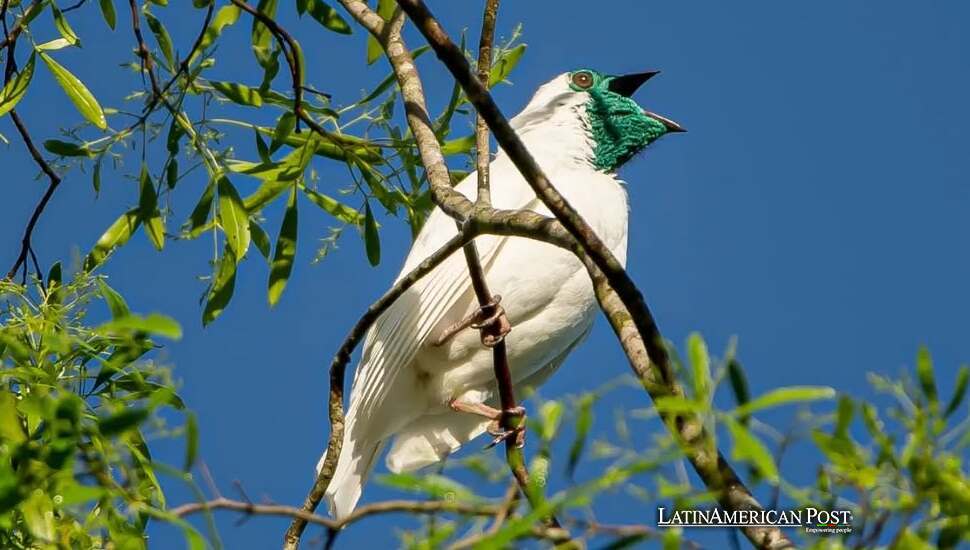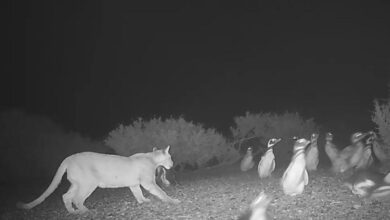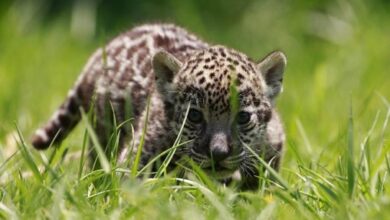Costa Rica Soundscapes Fuel Conservation And Ecological Insights

In a remote Costa Rican forest; biologist Mónica Retamosa heard a metallic bird call echoing above the canopy—a cryptic bellbird she could never spot. That moment captures how listening to nature transforms conservation strategies and fuels unprecedented ecological understanding.
The Metallic Call That Sparked a Mission
While changing the batteries of a recording device near Costa Rica’s AmistOsa Biological Corridor, biologist Mónica Retamosa first heard the piercing call of the bellbird (pájaro campana). The noise was strangely metallic—an otherworldly sound reminiscent of what we might imagine extraterrestrial transmissions to be. Despite searching for half an hour, gazing upward toward the treetops, she never caught sight of the elusive bird. Yet, she smiled. This was all part of her work in listening to ecosystems, an approach that harnesses the power of bioacoustics and ecoacoustics to uncover hidden aspects of wildlife behavior.
For years, many have appreciated the melodic trills of birds or the rhythmic croaking of frogs, but modern bioacoustics takes that appreciation further. It examines how sounds are generated, transmitted, and perceived in different habitats. Meanwhile, aeroacoustics goes beyond individual species to capture the entire soundscape of a place—biological, geophysical, and even human-related noises—and then interpret its ecological significance. Retamosa has seen rapid growth in these scientific fields over the last decade, noting how capturing nature’s sounds gives new ideas about biodiversity plus the condition of fragile habitats.
The bellbird’s call that day aided a project that followed the species’ seasonal shifts and spread at various heights in Costa Rica. Understanding where and when bellbirds appear can serve as a functional indicator for the health of the AmistOsa Corridor, which links the sprawling La Amistad International Park to reserves in Costa Rica’s southern region. That corridor is more than just lines on a map—it is an evolving lifeline designed to restore forest continuity, allow wildlife to roam freely, and preserve the natural rhythms that local communities have depended on for generations.
Listening to Nature’s Hidden Conversations
Retamosa has long been at the forefront of bioacoustic research. After completing her doctorate at Purdue University, where researcher Bryan Pijanowski advanced the study of soundscape ecology, she returned to Costa Rica to put these concepts into practice. Today, she works at the Instituto Internacional en Conservación y Manejo de Vida Silvestre (ICOMVIS) within the Universidad Nacional de Costa Rica, devoting her energies to understanding the diverse sonic signatures of one of the planet’s most biodiverse nations.
“Sounds have been forgotten regarding conservation,” Retamosa told Wired en Español. “What we see in bird counts is often less than what we hear. Most of the time, we hear far more species than we ever spot with our eyes. When a system is disturbed, we often detect that disturbance sooner through a change in the soundscape—maybe a missing call or the presence of an unusual noise—than through any other factor.”
The evolution of automated recording technology changed both bioacoustics and ecoacoustics. Sensors work for months without human help and record wildlife sounds for study. Though more advanced setups exist in other parts of the world—using solar panels and internet connectivity to receive real-time data—the tropical forests in Costa Rica require a more hands-on approach. Retamosa and colleagues like Jimmy Barrantes and Randall Jiménez regularly trek into humid, muddy, and sometimes perilous terrain to install and maintain these devices. The forest can be unforgiving: once, Retamosa fell and fractured her ribs. The forest can be cruel: once, Retamosa fell and hurt her ribs. But the reward is enormous: by not using intrusive methods, researchers can collect actual sound samples from the animals in their natural place, often proving that secret or hard-to-find species exist.
The audio stations give back enormous data, often reaching terabytes of sound files. Researchers then convert these recordings into spectrograms—visual representations of sound frequencies over time, appearing like jagged mountain ranges in digital form. The team can decode biological patterns from these spectrograms and detect subtle changes that might elude even the most attentive human observer in the field.
Changing the Approach to Conservation
Bioacoustic records are not new. Scientists have taken portable recorders into the jungle for decades to record the calls of birds, amphibians, and insects. Some recordings ended up as movie sound effects or experimental music. The difference now is in scale and efficiency. Constant automated recordings can capture entire soundscapes 24/7, presenting an unprecedented opportunity to analyze nature’s full vocal tapestry.
Using these massive data sets, otoacoustic scientists calculate “acoustic indices,” which are mathematical formulas translating characteristics of the soundscape into meaningful ecological indicators. “These indices can show the sound strength of a place or record the range of frequencies present,” Retamosa told Wired. They serve as low-cost tools that can show activity patterns and diversity that would otherwise stay unseen.”
When Retamosa first got involved in this field, only about eight acoustic indices were well known. Today, more than 80 exist, each attempting to describe aspects of a habitat’s sound environment—everything from species richness to the intensity of specific frequencies. Studies elsewhere have indicated, for example, that some birds in urban settings call at higher volumes to be heard above traffic. At the same time, newly hatched sea turtles use sound-based cues to synchronize their arrival into the world. But the tropical realm, teeming with a broader variety of species, poses distinct challenges. Retamosa’s research has shown that specific acoustic indices developed in temperate environments do not always correspond to actual species diversity in lush tropical zones. Instead, an index might reflect a single species’s constant, loud calls rather than an actual multiplicity of voices. Tweaking these indices or developing new ones for tropical contexts is part of the cutting-edge research needed to make ecoacoustics a universal tool for wildlife management.
One of Retamosa’s current projects targets the AmistOsa Biological Corridor, which was outlined on paper in 2010 after decades of conservation policies in Costa Rica. The area builds upon the success of a 1990 forestry law that protected wild zones and incentivized farm reforestation through payments for environmental services. Today, the corridor cuts across vast swaths of the country, including territories of Indigenous communities and Costa Rica’s largest wetland. Researchers can help community-led committees make informed decisions about corridor protection, invasive species management, and other pressing conservation actions by collecting sound-based data on bellbirds and other species.
Collaborating with the government, local landowners, and the national conservation system (SINAC), Retamosa aims to develop a standardized monitoring protocol. “We want to link the government, communities, and academia,” she explained. “We can provide the analysis and interpretation, but we also want these groups to take ownership of their monitoring. The data belongs to everyone who lives in these lands and depends on the health of these ecosystems.”
Charting a Future Through Sound
Costa Rica is known for having about 53 biological corridors that span 38 percent of its territory. This fact shows the country’s care for nature. Proper corridor management needs constant attention. According to Retamosa, many corridors have been defined administratively—connecting protected forests on a map—without thoroughly understanding the day-to-day realities of the wildlife that travel or migrate through them. That’s when acoustic monitoring proves crucial: by placing these “ears,” scientists record animal movements, find where species face threats from logging or development, and measure how reforestation alters biodiversity.
The ultimate vision? A robust, widespread network of acoustic sensors feeds into a national (or even regional) database, where local communities, policymakers, and researchers can collaboratively analyze the pulse of Costa Rican wildlife. This synergy goes beyond academic curiosity—it could identify illegal logging through the whine of chainsaws in protected zones or detect shifts in specific amphibian calls linked to diseases or environmental toxins.
However, implementing such a system is far from trivial. Tropical weather can be punishing, and the initial installation of recording devices demands time, labor, and financial resources. Then, there is the mammoth task of analyzing and storing massive data. Even the best algorithms can be stumped by overlapping calls in the rainforest, and real-time monitoring often requires internet access and stable power sources. Where solar panels fail to get enough light in dense forests, teams must still manually replace batteries and memory cards every few weeks, making the process both high-tech and physically demanding.
Yet, as Retamosa’s encounter with the bellbird shows, the effort is richly rewarded. Knowing that a species is present from its call—even if you never glimpse it—can help fill knowledge gaps in distribution maps. Sound recording also reveals peak activity times, such as a chorus of bird calls at dawn or frogs croaking at dusk. Piecing these patterns with local knowledge allows a deeper understanding of how wildlife interacts with farmland boundaries, climate changes, or migratory routes.
This acoustic lens also ignites local interest. Farmers and Indigenous communities who become part of a sound-monitoring project may begin to see—or hear—their environment in a fresh way. The nighttime calls, once ignored, may show an endangered frog’s mating call or the arrival of a migratory bird vital for pollination. With residents helping in data collection, Retamosa wants to build grassroots care. After all, real conservation thrives when people in a region feel empowered and responsible for the well-being of the species that share their land.
Those unseen ties to natural sounds also show a caring side of conservation. Hearing the bellbird’s call surprises many – a reminder that wild places keep unknown things we may learn. For Retamosa, a plain bird in the canopy may mean hope. “Sometimes not seeing is okay,” she remarked. “It underscores that so much is left to learn that the forest still keeps its mysteries. And if we can record that song, we know those mysteries remain intact for future generations.”
Her reflections align with Costa Rica’s broader ethos of blending environmental preservation with local engagement. Whether analyzing a single species’ calls or capturing the entire rainforest orchestra, sound-based research pushes conservation closer to a holistic understanding of ecosystems. Scientists such as Retamosa help shape a new future by listening to nature’s voice. In this future, the bellbird’s call or the insects’ hum may serve as the key to defending a delicate life corridor.
Also Read: South and Central American Cane Toads Threaten Ecosystems Worldwide
In many ways, the technology has finally caught up to a fundamental principle: that life resonates in complex soundscapes, each telling overlapping stories of struggle, adaptation, and survival. From battered recording devices placed deep in the undergrowth to the careful algorithms deciphering spectrograms back in the lab, each puzzle piece contributes to a bigger picture of how to live alongside these creatures. As the field of ecoacoustics matures, it offers a beacon of hope. Just as a single bird’s call can pierce the layered buzz of a forest, the acoustic approach in Costa Rica and beyond is beginning to cut through the static, revealing new ways to preserve and appreciate the vast symphony of life surrounding us.




